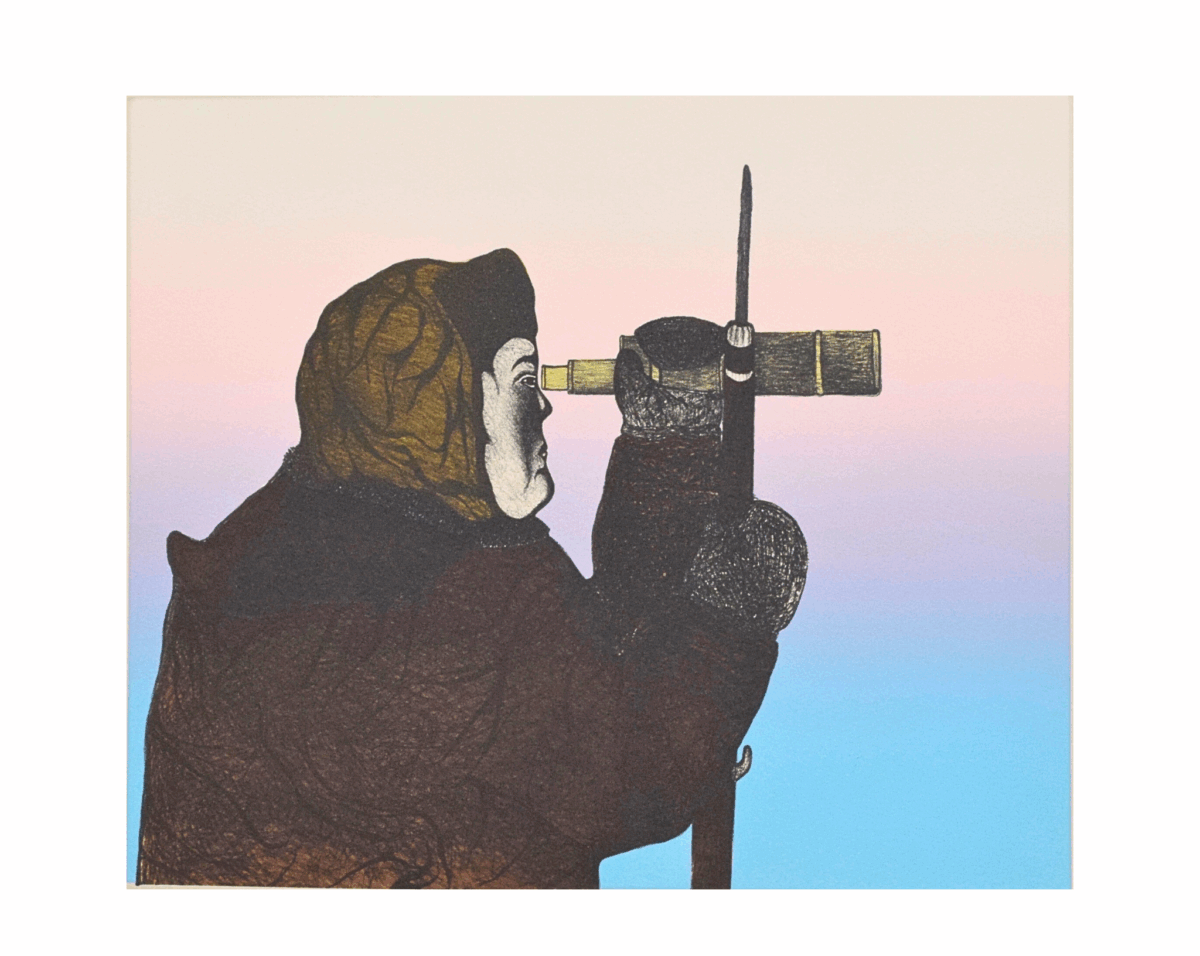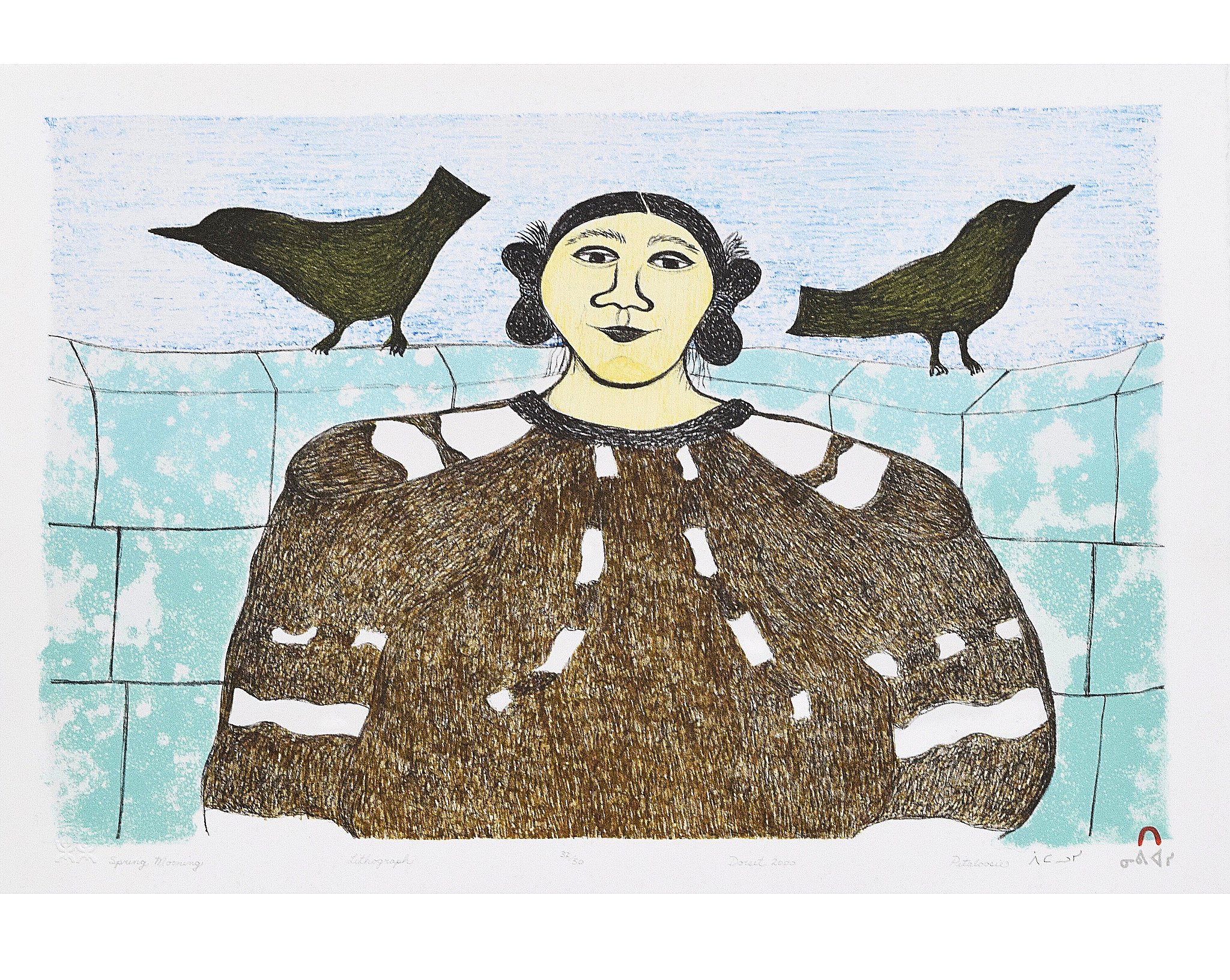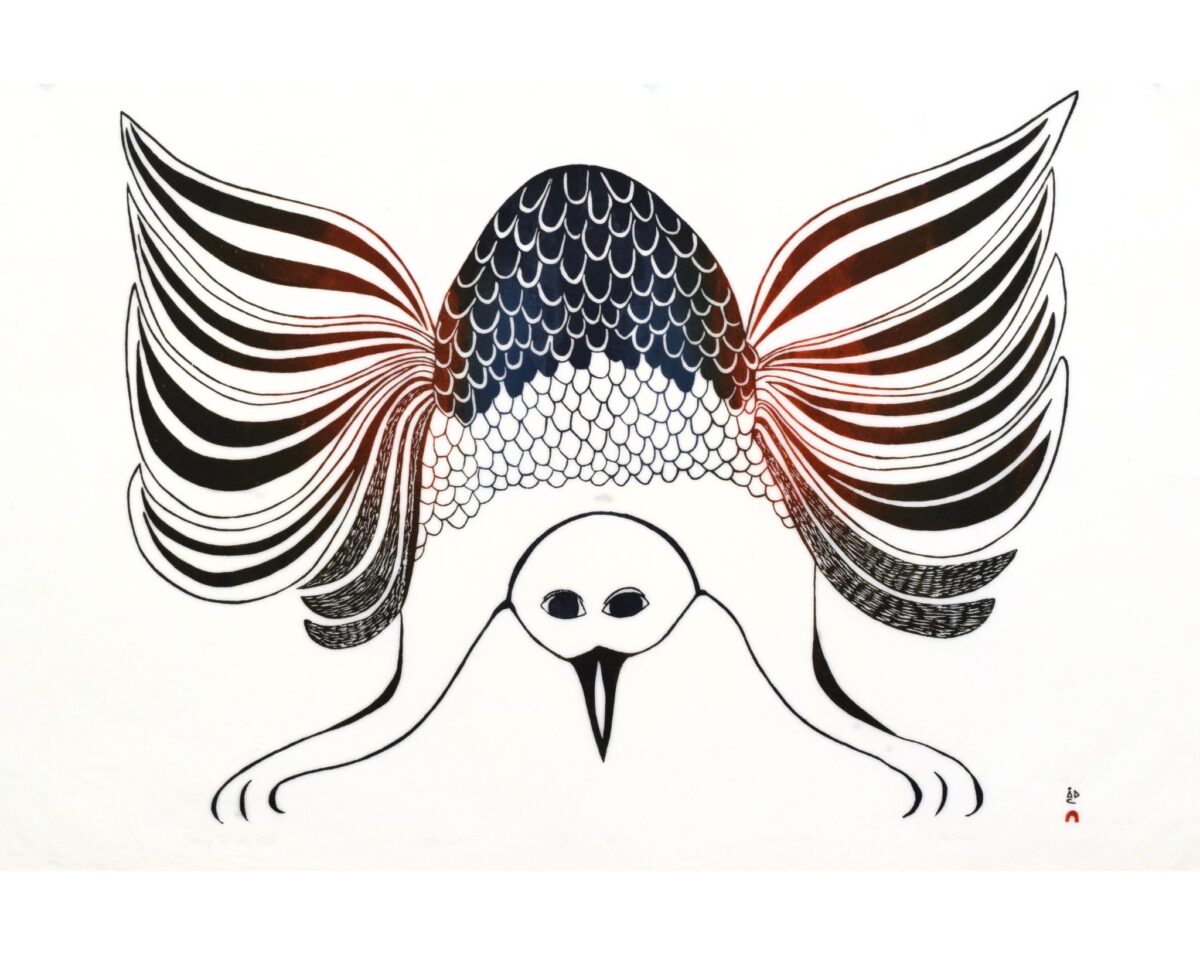Summer Solace: Pitaloosie Saila

May 23 – June 14
In an artistic career that lasted more than five decades, Kinngait’s Pitaloosie Saila produced an important body of drawings and prints that centred the emotional and psychological worlds of Inuit women. This exhibition, the first to focus on Saila’s work since her death in 2021, brings together 10 classic prints by the artist. Saila often pictured women as the nurturers of children and as strong presences within the domestic sphere. In Scraping Caribou Hide, her large lithograph from 1991, the artist portrays a woman performing her work while a child plays behind her watched by a dog. The woman’s strongly defined features and boldly contoured winter garment, together with an almost sculptural approach to form and earthen tones, contribute to a sense of graphic monumentality.
Saila made many lithographs, a form of printmaking that seemed particularly suited to her expressionistic vision. One of her most striking prints is Summer Solace, the 2001 lithograph from which the exhibition derives its title. In this modestly scaled image, a woman with braids stands alone on the rocky shore against a treeless hill backdrop. The woman’s face is turned up to the sky while one hand presses expressively onto her forehead, signalling either psychological distress or relief. Another lithograph from the same year portrays a woman whose traditional dress seems tattered and frayed—society’s outcast, the title informs us. Although these images portray women in traditional Inuit garments, they are not chiefly devoted to illustrating the roles that women have historically played in Inuit culture. They instead express something about the interior lives of the subjects.
While the majority of Saila’s prints depict women within domestic spaces or out on the land, she also often portrayed birds. Her renderings of owls and ptarmigans are typically stagey and theatrical. In her classic large 1984 stonecut, Saila pictures a stylized owl with outspread wings and legs, as though it might be landing on a nest. Less dramatic but equally exuberant is her 1981 lithograph depicting a contoured blue and yellow ptarmigan whose side-to-side motion seems rhythmical, almost dancelike.
Not all of Saila’s human portraits depict women. A lithograph from 2004 pictures a male hunter in profile gazing through a telescope, searching the horizon for animal prey. The combination of European and Inuit technology (the latter includes the man’s harpoon positioned at a right angle to the telescope and his deeply creased skin parka) recalls a transitional time in northern history when new influences were being adapted and put to use by Inuit.
In a 1991 interview, Saila stated: “I draw what I have seen or heard; I draw about my life. I draw so the Inuit traditional way of life can be preserved on paper, and it is only when I draw that it will be shown.”








